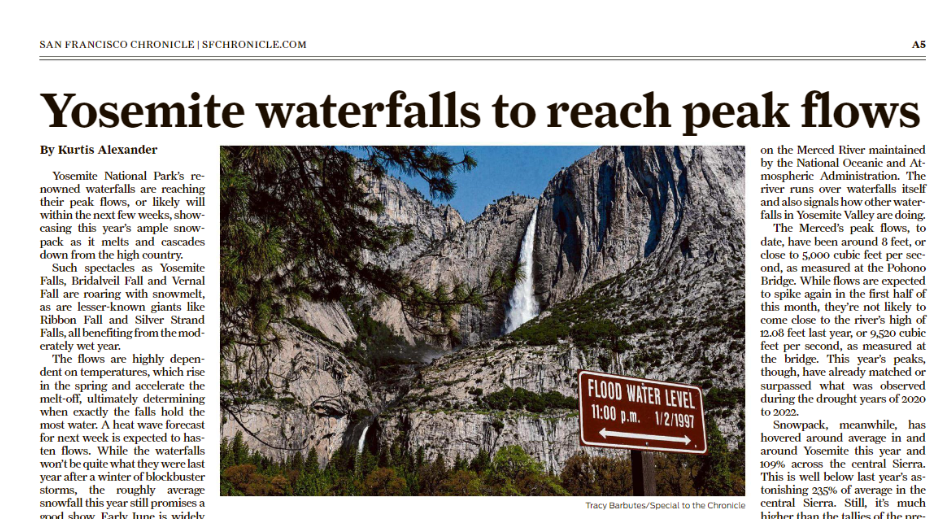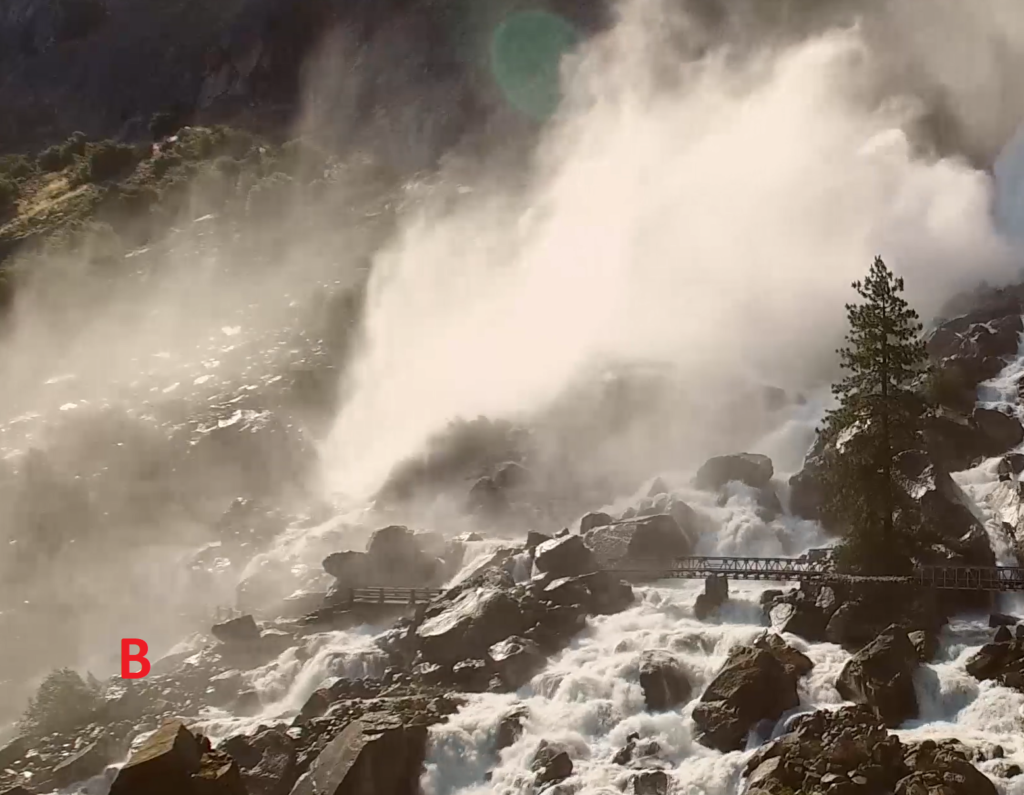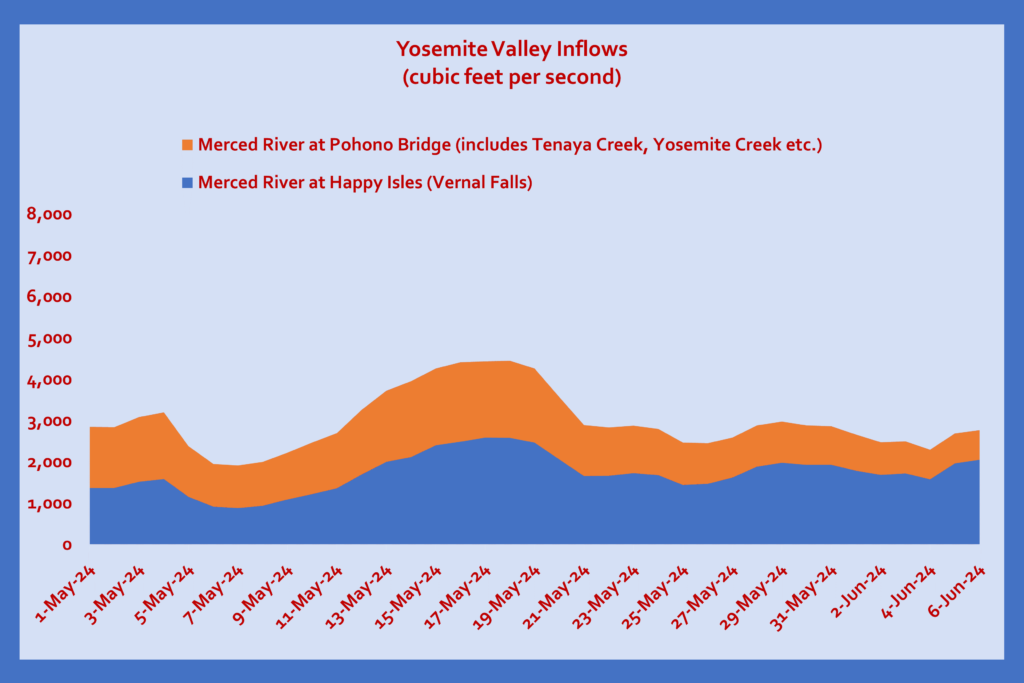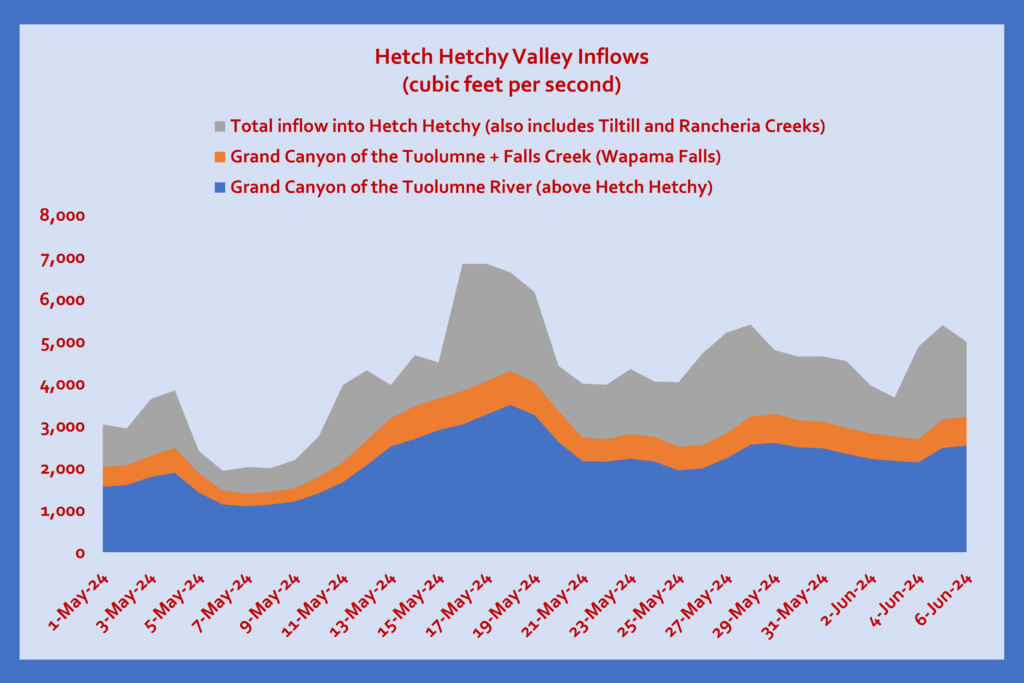Earlier this week, the San Francisco Chronicle predicted that Yosemite’s waterfalls would reach their peak flows in early June. We will see if that’s the case, or whether the flows reached in mid-May will remain the highest of the 2024 snowmelt season.

Either way it is a spectacular time to be in Yosemite. When the water is high, the “Mist Trail” to Vernal Falls nomenclature is misleading. The “mist” is an icy torrent shooting upwards – perhaps welcome and exhilarating on a hot day but a bit intimidating and possibly dangerous as well.
Wapama Falls at Hetch Hetchy is a twisting torrent unlike any other in Yosemite, reminiscent of braided hair being continuously unraveled in the wind. The first bridge at Wapama, however is treacherous to cross at high water – hikers have been swept off to their deaths. The National Park Service has not yet replaced the bridge as planned but hopes to do so later this year. (This long overdue project is funded by San Francisco as constructing the trail past Wapama was mandated by the 1913 Raker Act which allowed the City to dam and flood Hetch Hetchy Valley.)

The westernmost bridge (see “B” in photo) at Wapama is treacherous to cross when the falls are at their most spectacular.
Yosemite and Hetch Hetchy Valleys are both about 8 miles long, but Hetch Hetchy is much narrower. The Tuolumne River watershed, however, is larger than the Merced River watershed so the Tuolumne carries more water. Thus, a larger river in a narrower valley once and will again stand out in that valley more so than the Merced River does in Yosemite Valley.
Both the Tuolumne River and the Merced River double in size (more or less) as they pass through Hetch Hetchy and Yosemite Valleys respectively. Within Hetch Hetchy, the Tuolumne River is also fed by Rancheria, Tiltill and Falls Creeks (Wapama Falls). Merced River inflows to Yosemite Valley are measured at the Happy Isles Bridge (below Vernal Falls), and augmented by Tenaya Creek, Yosemite Creek (Yosemite Falls) and other streams before tumbling over cataracts at the valley’s western end.


There is no way to measure Yosemite Falls, but its watershed and elevation are similar in size (~44 square miles) to that of Wapama Falls, so it is reasonable to assume that their flows are similar.
All of Yosemite is spectacular 365 days a year, but if you love thundering waterfalls now is the time to go.
